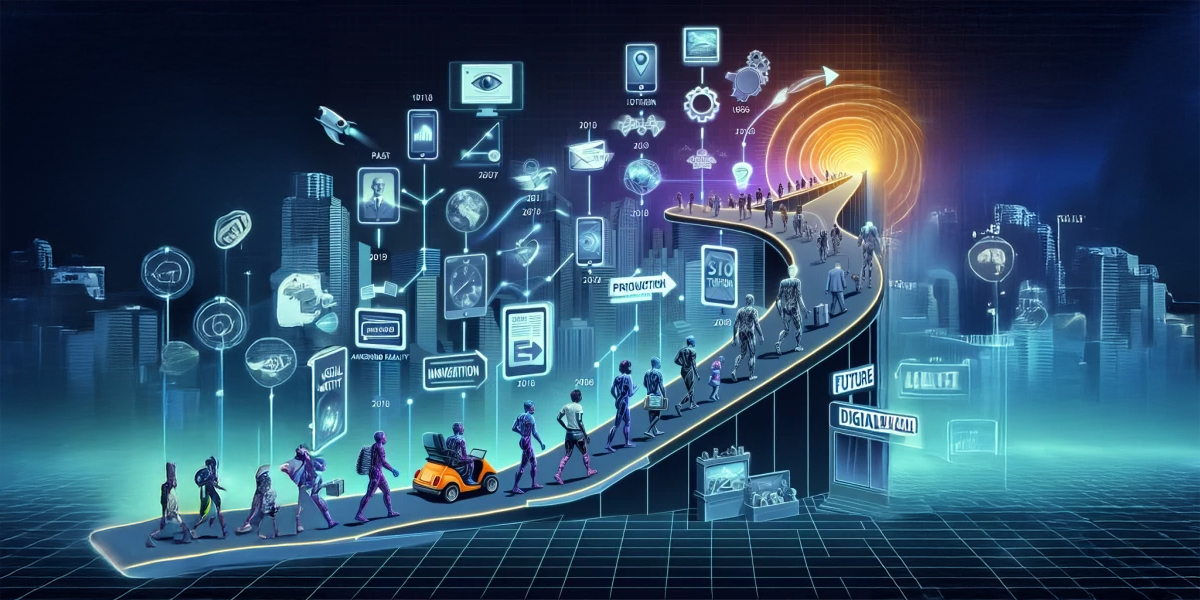Digital marketing, a term that encapsulates an array of online marketing strategies and methods, has evolved tremendously over the past few decades. From simple email campaigns to complex omnichannel strategies that engage consumers at every touchpoint, the landscape of digital marketing is a testament to both technological advancements and changing consumer behavior. In this blog post, we will explore the evolution of digital marketing as we delve into its past, assess its present state, and speculate on the future trends that could redefine how businesses engage with their audiences.
The Past: The Dawn of Digital Marketing
The journey of digital marketing began in the early 1990s when the first website was created. Marketing in the digital space was rudimentary at best, primarily consisting of banner ads, simplistic websites, and rudimentary email marketing. The launch of Google in 1998 marked a significant turning point in the digital marketing landscape, giving rise to search engine marketing (SEM).
The late 1990s also introduced the concept of Search Engine Optimization (SEO), enabling businesses to enhance their website’s visibility on search engines. SEO strategies consisted mainly of keyword stuffing and basic link-building techniques. However, search engines quickly evolved, requiring marketers to adopt more sophisticated and ethical approaches.
By the early 2000s, social media platforms began to gain popularity, starting with Friendster and MySpace before transitioning into giants like Facebook and Twitter. This shift led to the emergence of social media marketing, which allowed brands to connect with consumers in novel ways. Email marketing saw significant improvements, with segmentation and personalization becoming more prevalent.
The Present: A Multi-Channel Approach
Fast forward to today, and the digital marketing landscape is more complex and integrated than ever before. Brands now employ a multi-channel approach, merging social media, content marketing, SEO, email marketing, and pay-per-click (PPC) advertising to reach their target audiences. Personalization has become a cornerstone of effective marketing strategies, with businesses leveraging data analytics to customize user experiences based on preferences and behaviors.
Key Trends in Present-Day Digital Marketing:
- Data-Driven Marketing: The influx of big data has transformed how marketers understand and interact with consumers. Data analytics tools now allow marketers to track consumer behaviors, preferences, and engagement, enabling them to make informed decisions.
- Content Marketing: Focusing on creating valuable and relevant content has become vital for attracting and retaining an audience. Whether through blogs, videos, or podcasts, content marketing drives traffic, boosts SEO, and fosters brand loyalty.
- Influencer Marketing: Consumers trust recommendations from their peers. Hence, influencer marketing has surged, with brands collaborating with social media influencers to promote products and services authentically.
- Mobile Optimization: With the rise of smartphones, mobile marketing has taken center stage. Marketers are now prioritizing mobile-friendly web designs and optimizing ads for mobile devices to enhance user experience.
- Omnichannel Marketing: Today’s consumer expects a seamless experience across multiple touchpoints. Omnichannel marketing integrates all communication channels to create a unified customer journey.
The Future: Innovations on the Horizon
As we look to the future, several emerging technologies and trends are poised to redefine digital marketing in the coming years. Here are a few key areas to keep an eye on:
- Artificial Intelligence (AI) and Machine Learning: These technologies are expected to revolutionize how brands understand consumer behavior. From chatbots providing instant support to AI-driven analytics predicting consumer trends, the possibilities are endless.
- Voice Search Optimization: With the increasing popularity of smart speakers and voice recognition technologies, optimizing for voice search will become crucial. Marketers will need to adapt their SEO strategies to cater to voice queries, which often differ from traditional text search.
- Augmented Reality (AR) and Virtual Reality (VR): These technologies offer immersive consumer experiences that can enhance product demonstrations and marketing campaigns. Brands that leverage AR and VR will stand out in a crowded marketplace.
- Privacy and Data Protection: With growing concerns about data privacy, regulations like GDPR have paved the way for more stringent measures in data collection and usage. The future of digital marketing will require companies to balance personalization with consumer privacy.
- Sustainability and Social Responsibility: Consumers are increasingly interested in brands that prioritize sustainability and social issues. As this trend continues, digital marketing strategies will need to reflect a commitment to corporate social responsibility.
Conclusion
The evolution of digital marketing is a fascinating journey that reflects technological advancements and shifting consumer expectations. As we embrace new tools and strategies, marketers must remain agile, ready to adapt to changes in both technology and consumer behavior. The challenges may be daunting, but the opportunities to innovate and connect with customers have never been greater. As we forge ahead into the future, it’s essential for businesses to stay informed and ready to evolve, ensuring they remain at the forefront of the digital marketing landscape.



